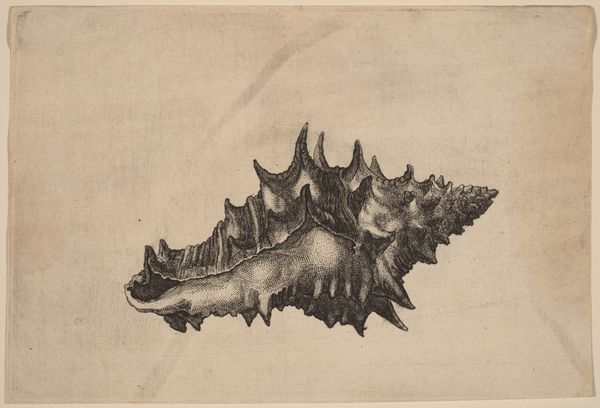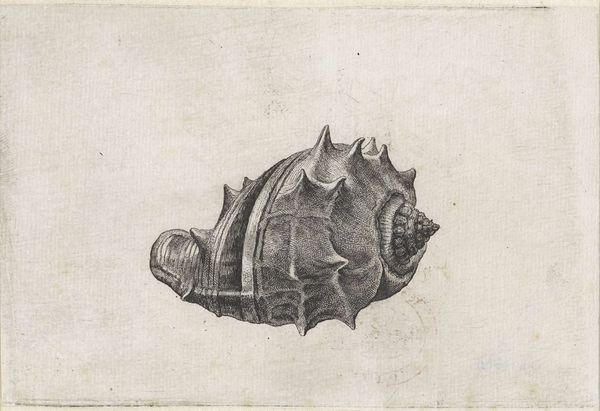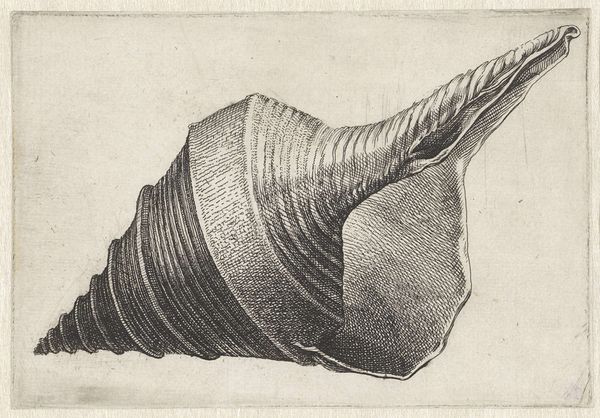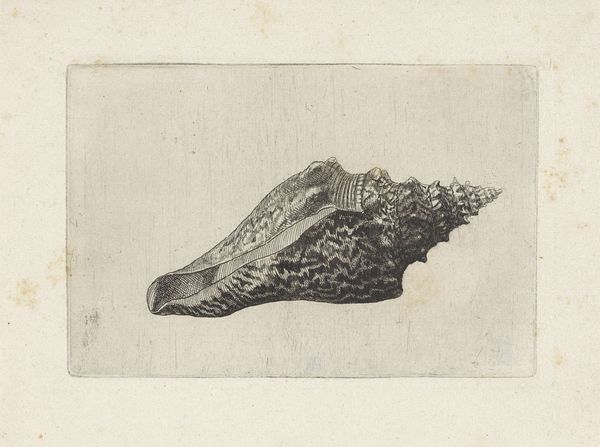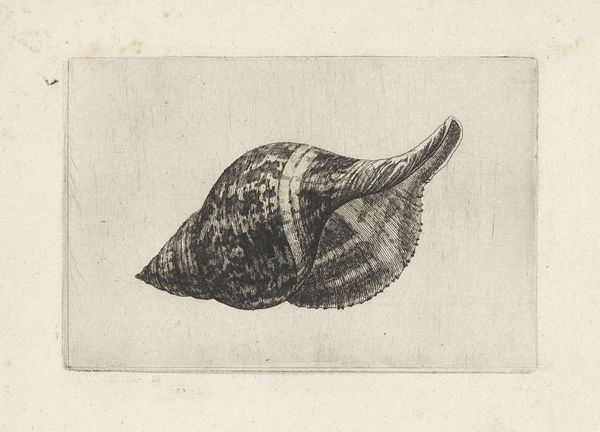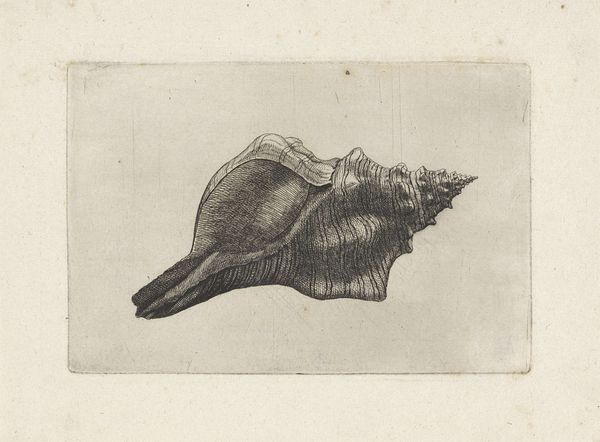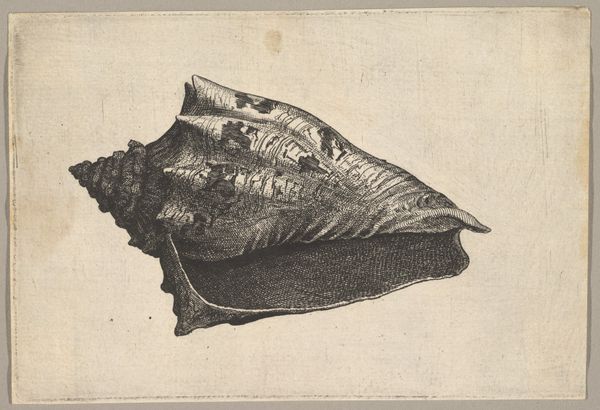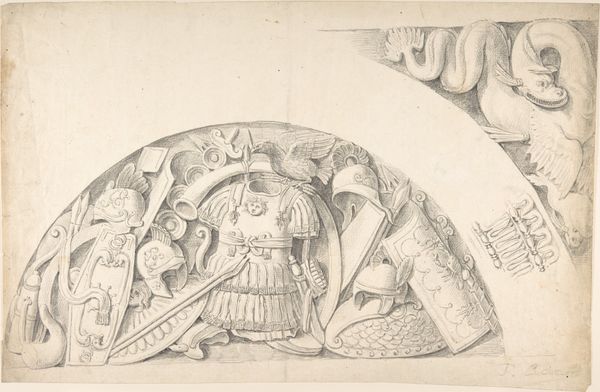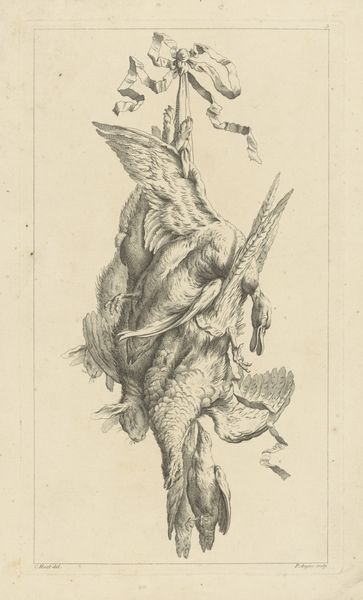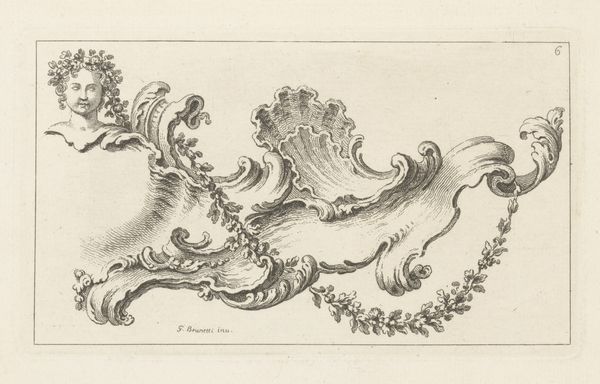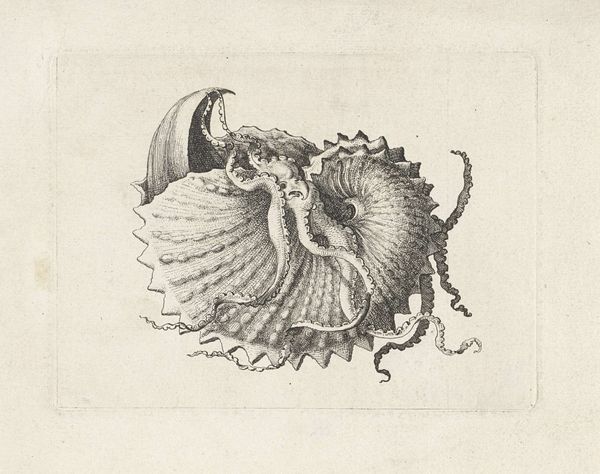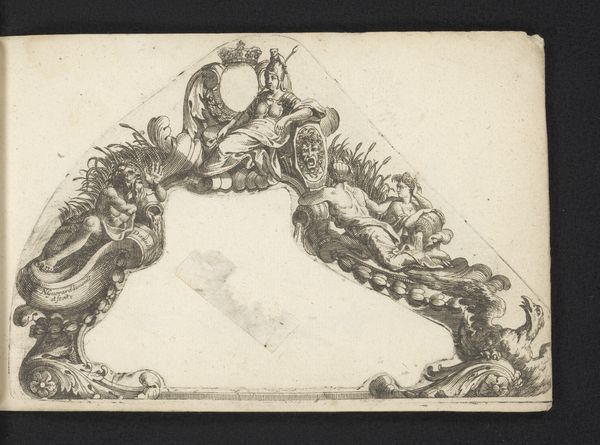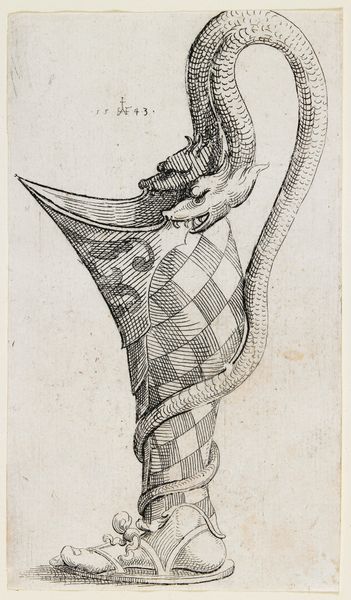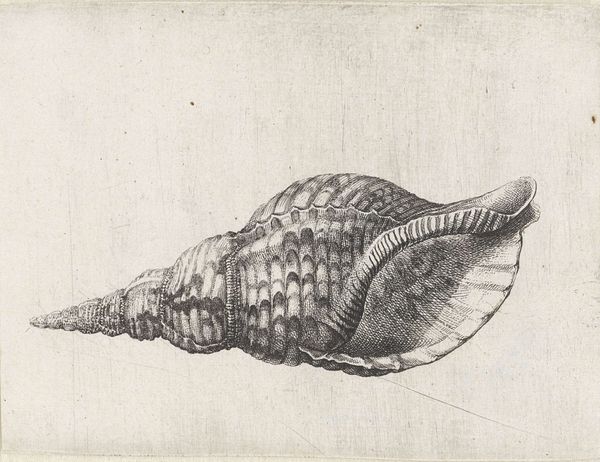
print, etching
#
baroque
# print
#
etching
Dimensions: sheet (trimmed to platemark): 9.5 × 13.6 cm (3 3/4 × 5 3/8 in.)
Copyright: National Gallery of Art: CC0 1.0
Curator: At first glance, it seems rather forbidding, doesn’t it? Editor: Indeed! Something almost monstrous about it. And that precision – what are we looking at exactly? Curator: This is Wenceslaus Hollar’s etching, "Shell (Murex brandaris)," created around 1645. Hollar, a prolific printmaker, was renowned for his detailed renderings of various subjects. Editor: A shell? Fascinating. Look at the material detail, the intense labor, I can almost feel the weight and texture just from those lines. The cross hatching must have taken quite some time. It is such a simple subject made so monumental by intense workmanship. What was Hollar getting at here? Curator: The popularity of detailed scientific illustration was really taking hold in the 17th century, fueling European fascination with the natural world. It was tied to emerging economic factors like increased global trade in scientific specimens, as well as an overall vogue for collecting. Hollar made several prints of shells, suggesting they were objects of considerable interest. Editor: Objects of status. Not only a record, but also a display of ownership. But I still keep thinking about the labour—the etching process, the press, the ink, all contributing to reproduce the shell in minute detail, it is quite impressive! Curator: It raises an interesting point about access, too. Prints like these made specimens, otherwise exclusive to collectors, available to a much wider audience, albeit within certain social spheres. And the imagery associated with shells wasn’t neutral. Editor: You're right, I wonder what meaning this object held during its creation? Curator: Well, we see shells in Dutch still life painting as symbols of transience and vanity, reminders of mortality… or indicators of wealth, depending on context. Editor: A commentary on time through a shell… I will certainly contemplate it differently now!
Comments
No comments
Be the first to comment and join the conversation on the ultimate creative platform.
